The Bukit Tigapuluh (BTP) ecosystem encompasses one of the largest remaining lowland forests on Sumatra and provides crucial habitat for Critically Endangered species such as the Sumatran tiger, orangutan and elephant. These have become flagship species for the conservation of the entire ecosystem. The main threats to the Bukit Tigapuluh ecosystem are illegal logging, illegal farming, mining and poaching. The Wildlife Protection Units (WPU) were formed over a decade ago and they are committed to the protection of the BTP ecosystem through habitat monitoring and protection, anti-poaching patrols, wildlife monitoring and human-wildlife conflict mitigation.
The WPU are divided into three sub-units to focus on different activities. The Ecosystem Monitoring Unit (EMU) is responsible for tiger monitoring via patrols and camera trapping. The ultimate goal of the WPU is to conserve the Bukit Tigapuluh Landscape as a fully functional ecosystem that provides habitat for vital populations of Sumatra’s native wildlife.
Through your help, The International Tiger Project promotes the survival of tigers in their natural habitat by undertaking genuine, measurable and effective tiger conservation.
The Ecosystem Monitoring Units maintain multiple camera trap stations on known tiger trails within the BTP ecosystem. For security purposes, all of the cameras are fastened with heavy chains and additional locks. In high priority areas, paired cameras are set to support tiger monitoring which needs pictures from both flanks for reliable identification.
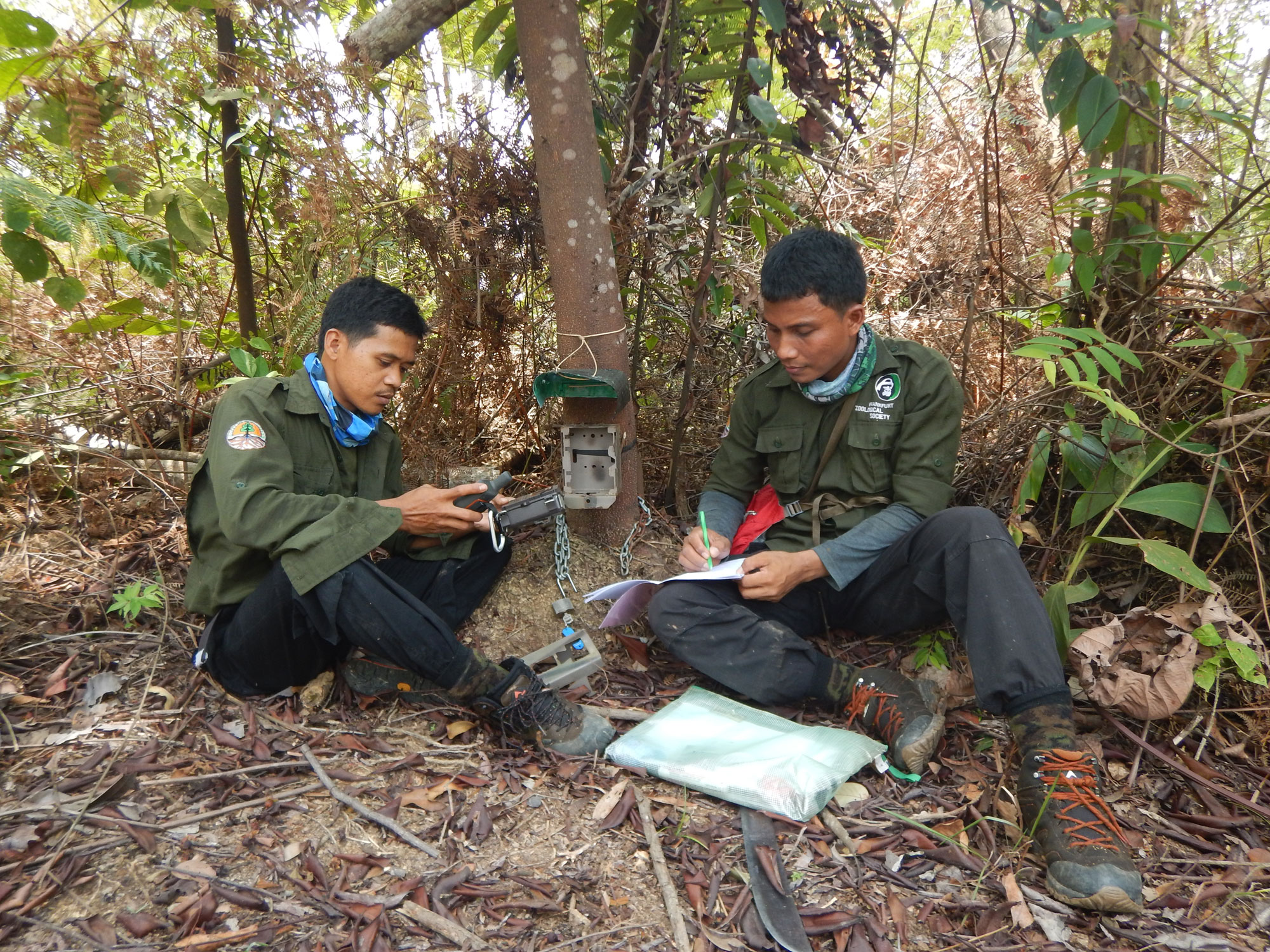
Ecosystem Monitoring Unit team members checking a camera trap
In order to discriminate between individuals, tiger pictures are analysed using unique stripe patterns and sex of the animals photographed. The resulting data is then analysed using spatial capture-recapture models. These models estimate density accounting for the spatial distribution and movement of individuals. The probability to photograph an individual at a given trap is conditional on where that individual’s home range centre lies, relative to the trap array. Camera traps play a vital role in identifying various species in an area. The main mammals found in the BTP Ecosystem can be seen in Sumatran Mammals- Photographs From Camera Traps in the Bukit Tigapuluh Landscape.
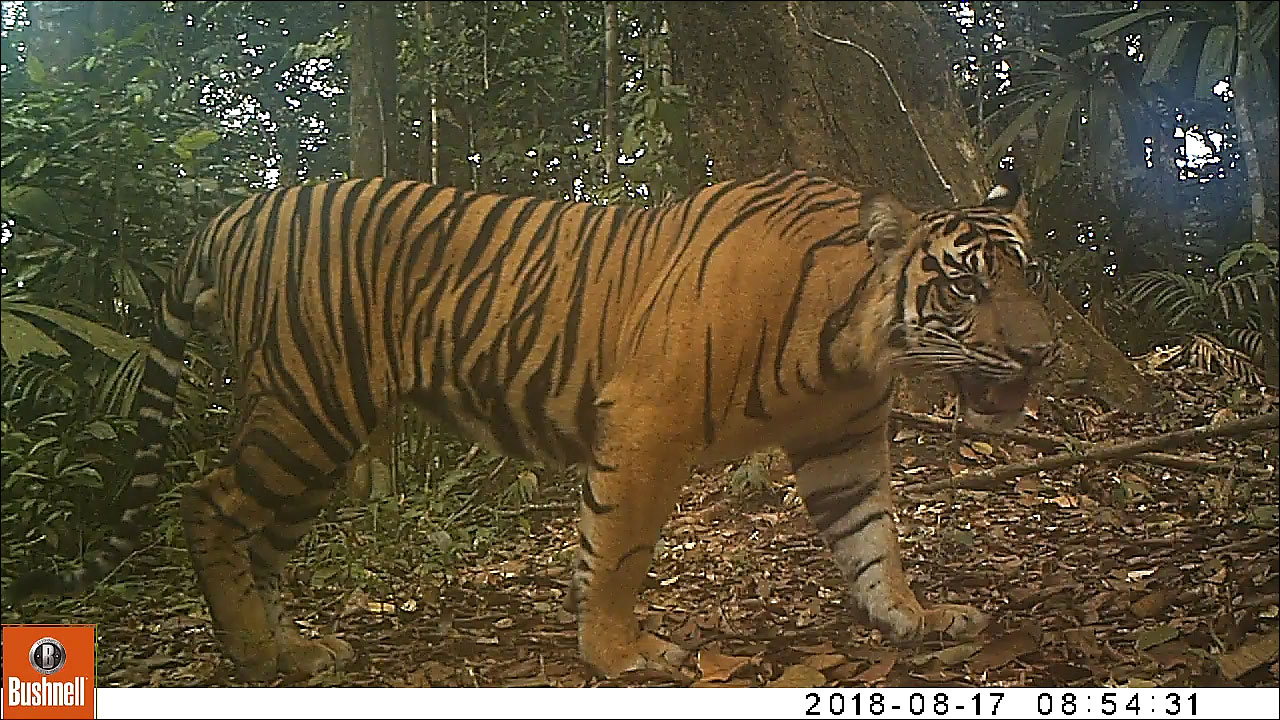
Adult male Sumatran tiger photographed in the BTP ecosystem
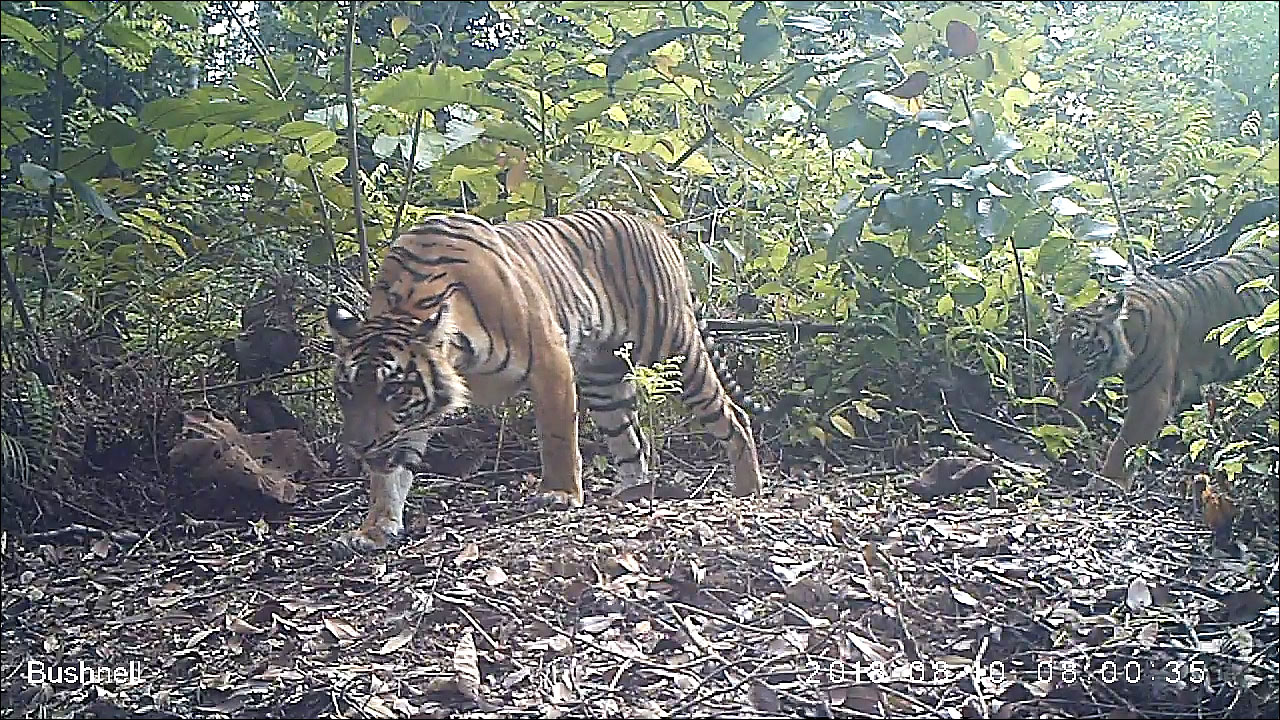
Adult male Sumatran tiger following a tigress in the BTP ecosystem
In addition to camera trapping, the teams patrol the area to collect information on illegal activities and wildlife tracks and sightings. One of the main activities of the WPU are foot patrols that focus on the detection and, most importantly, prevention of poaching in pre-selected areas. These patrol activities aim at deterring poachers and also enable the detection of any poaching waves early on, should they occur. Each month, our teams patrol roughly 15,000 ha using standard data collection methods (SMART; Spatial Monitoring and Reporting Tool) to detect any evidence of illegal activities and collect wildlife distribution data. Any snares that are found are inactivated and poaching attempts are directly reported to the WPU field office in Tebo city. Here, the information is processed and forwarded to law enforcement.
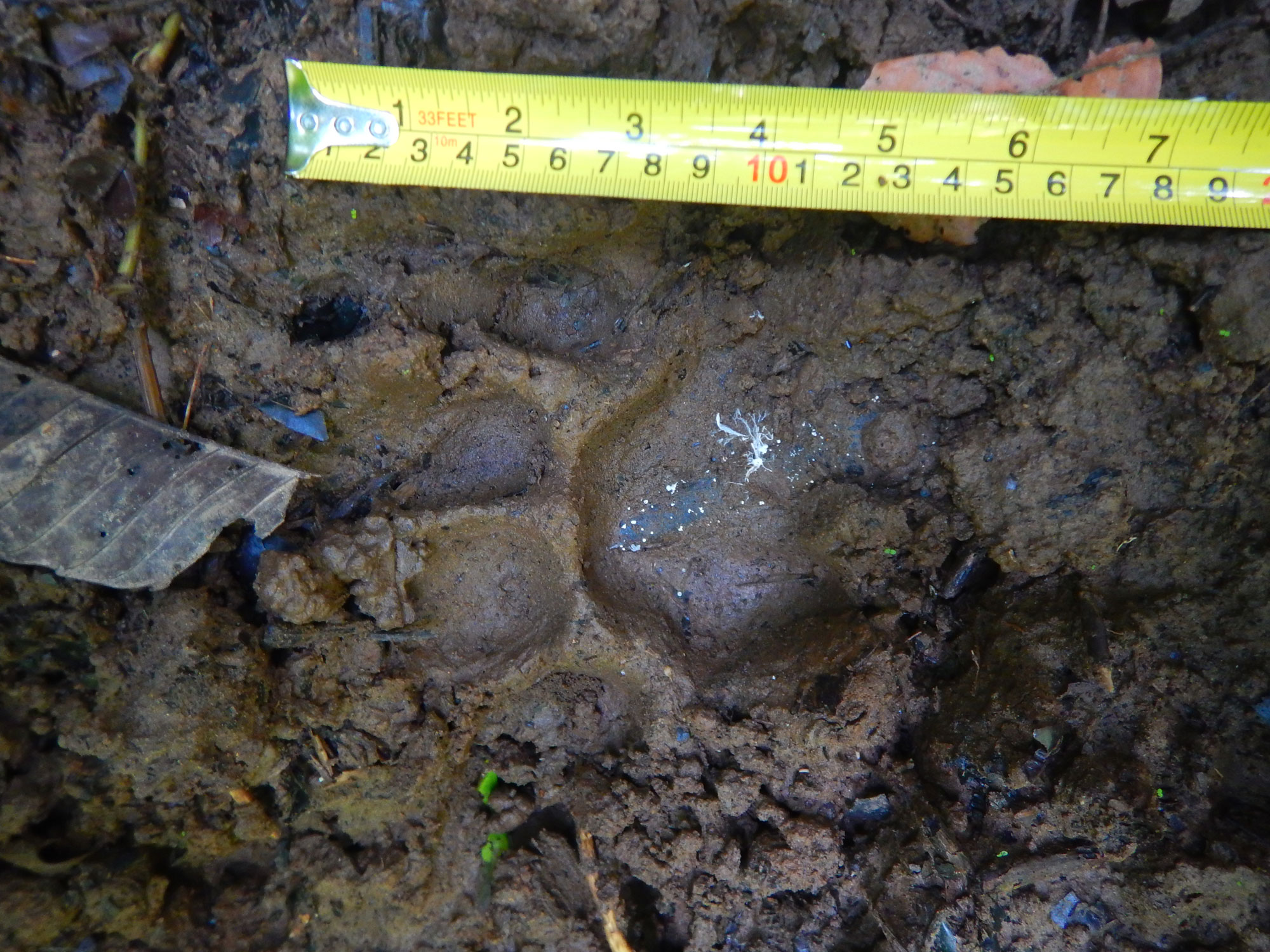
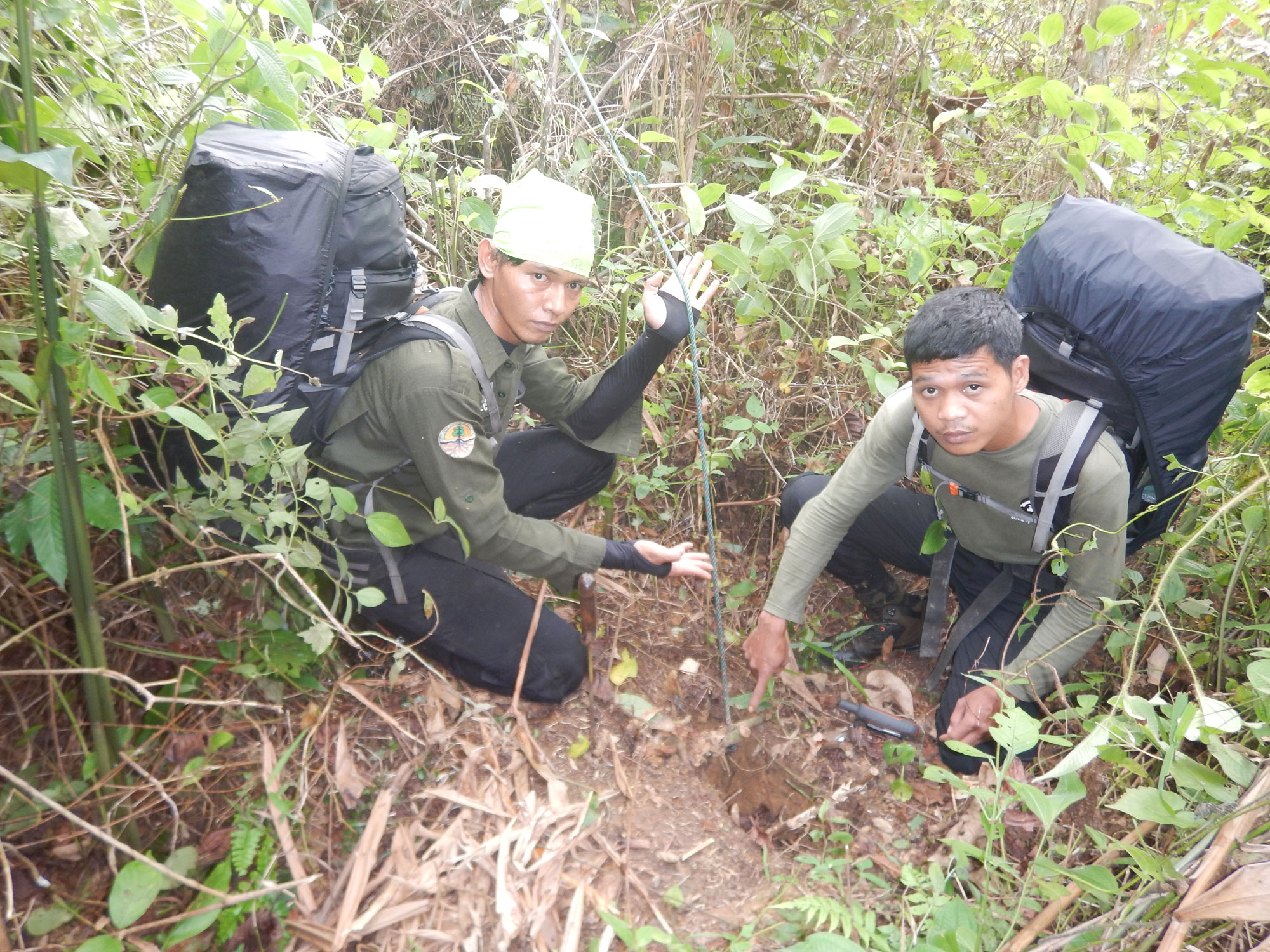
A fresh tiger print in mud found by the EMU (left) and detection of a snare (right)
The WPU teams are made up of local people, providing excellent employment opportunities and increasing the profile of the Sumatran tiger and its importance in the area. WPU members receive extensive training including first aid, wildlife crime investigation, survey techniques and report writing. To date, the WPUs have been highly successful in deterring illegal activities within the BTP ecosystem.